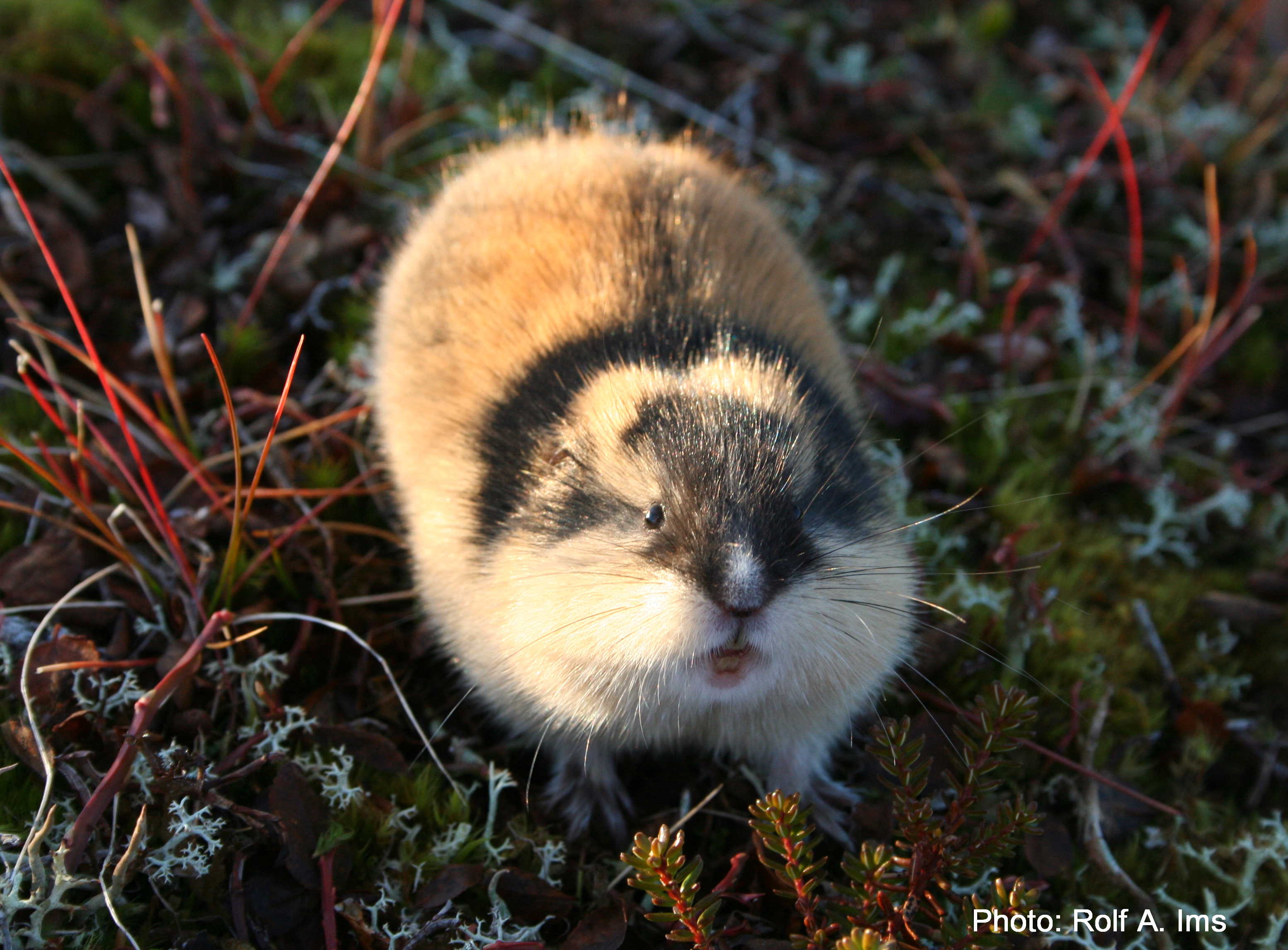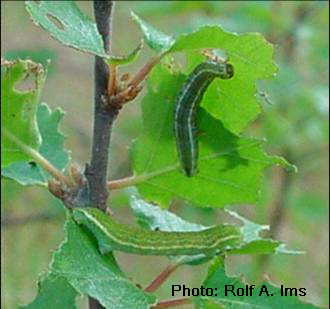Small herbivores
Small herbivores are often more influential to the structure and dynamics of ecosystems than large herbivores. This also regards arctic and sub-arctic ecosystems in Finnmark. Our research within the Ecosystem Finnmark umbrella focuses on two groups of small herbivores. One group is small rodents, consisting of several species of voles and the Norwegian lemming. These small mammals form the heart of many northern terrestrial food webs (Ims and Fuglei 2005).
Our studies on voles and lemmings within Ecosystem Finnmark focuse on spatial and temporal patterns of population dynamics, plant-herbivore interactions and predator-prey interactions. In order to study population dynamics, we have established a spatially extensive monitoring system (see map). The importance of such monitoring has recently become accentuated as the normal cyclic population dynamics of northern small rodent populations appears recently to have become disrupted by climate change in boreal and sub-arctic regions (Ims and Fuglei 2005, Ims, Henden & Killengreen in press). The ecosystem consequences of disrupted, cyclic small rodent dynamics on species assemblages of Arctic Predators are studied in a project within the International Polar Year. The particular connection between small rodent dynamics and the endangered Arctic fox population is studied in our project Arctic fox in Finnmark . Finally, small rodent-plant interactions are examined in project focusing on willow thickets as hot spots for biodiversity and ecosystem interactions.
The second group of small herbivores we focus on in Ecosystem Finnmark is birch forest moths (Norwegian: bjørkeskogsmålere eller lauvmakk). These forest insects function as a key factor in the dynamics of sub-arctic birch forest, owing to massive population outbreaks causing extensive defoliation and even forest death. We have evidence suggesting that climate change acts to intensify such moth outbreaks (Hagen et al. 2007). Our research activities consist of two related birch forest moth projects financed by the Research Council of Norway.
Lemming is one of the key species in northern terrestrial ecosystems
Larvae of the two most influential moth species in the
birch forest. The upper dark is winter moth, while the
lower green is autumnal moth.

